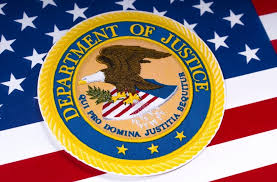Teasing Out Clawbacks and Deferred Payment Schemes – Who Should be Held Accountable and for How Much? (Part II of III)

The Justice Department did not just willy-nilly announce its embrace of clawbacks and deferred payment compensation punishment as a remediation tool for companies that suffer an enforcement action and settlement. To the contrary, DOJ has been examining this issue, even citing it in important policy spheres and enforcement actions, as an important tool in its arsenal.
Both the DOJ and the SEC have been weighing these issues under the rubric of remediation. In particular, DOJ and the SEC have evaluated disciplinary actions for those directly involved in misconduct and even those who may not have been directly involved but were indirectly responsible for oversight and monitoring of the various actors.
What is new – and exciting – is the extent to which DOJ is now open to examine the efficacy of these measures as an important alternative to massive criminal fines against companies that ultimately punish shareholders without holding accountable the bad actors beyond termination of employment.
Let’s start with a premise – a bad actor in a corporate scandal often will be terminated or at least reassigned by a company as a part of the overall investigation and resolution process. However, the bad actor may leave the company with prior bonuses and vested share benefits intact. The termination of the bad actor often involves sensitive severance negotiations for senior officials at the company which may result in senior managers or executives retaining a portion of their “benefits” despite their improper behavior.
Additionally, the bad actor classification, under DOJ parlance, appears to have expanded (like the SEC’s focus) to include not only those actors who actually committed the wrongdoing but to those supervisors and executives who were responsible for oversight and monitoring of the corporate department in which the misconduct originated.

This latter category raises nuanced determinations as to the extent to which a manager or executive should be held accountable, particularly if termination is not required. In this situation, a company may have to impose real financial penalties for such oversight and monitoring failures and make sure these penalties adequately punish the wrongdoer. Again, this set of incentives-disincentives have to be carefully crafted in line with individual motivations and anticipated behaviors.
As companies begin to grapple with these important issues, it is important to recall that a compliance oriented compensation system will be implemented along with existing clawback and deferred payment systems. The SEC just announced its new clawback regulations governing accountability for senior executives in situations where companies have to restate corporate earnings. This comprehensive regulatory regime is limited to senior executives but is yet another layer of incentives-disincentives for compliance professionals to evaluate.
The New Turn and Focus
Companies need to initiate a review of their compensation programs to make sure they align with their compliance expectations. A clawback program under the SEC’s rules cannot be crafted without analysis and integration with a compliance-focused clawback and deferred compensation program. Companies should embrace this task as an effective means to advancing a positive set of incentives and disincentives to encourage and hopefully maximize compliant conduct.
If companies wait to begin this process, DOJ (and possibly the SEC) may define the nature and scope without due regard for corporate issues that may vary across basic factors, such as the size of a company, location, industry and other relevant concerns. It is often a good idea to begin before the government mandates issues so that the government may consider important input from companies and various trade association representatives.

At a minimum, companies have to address specific issues such as:
- Should compliance compensation programs extend to directors, officers, senior executives and senior managers?
- How should a compliance clawback program be defined?
- How much of the company’s bonus payments should be subject to clawback?
- How should the company distinguish between bad actors and those whose misconduct was primarily a failure to monitor and supervise effectively?
- How much clawback should be imposed for failures to monitor and supervise?
- How should stock-benefit vesting programs incorporate punishment and reduction of benefits for bad actors based on rank in the organization, nature of misconduct, and overall eligibility for different levels of participation in the stock-benefit vesting program?















